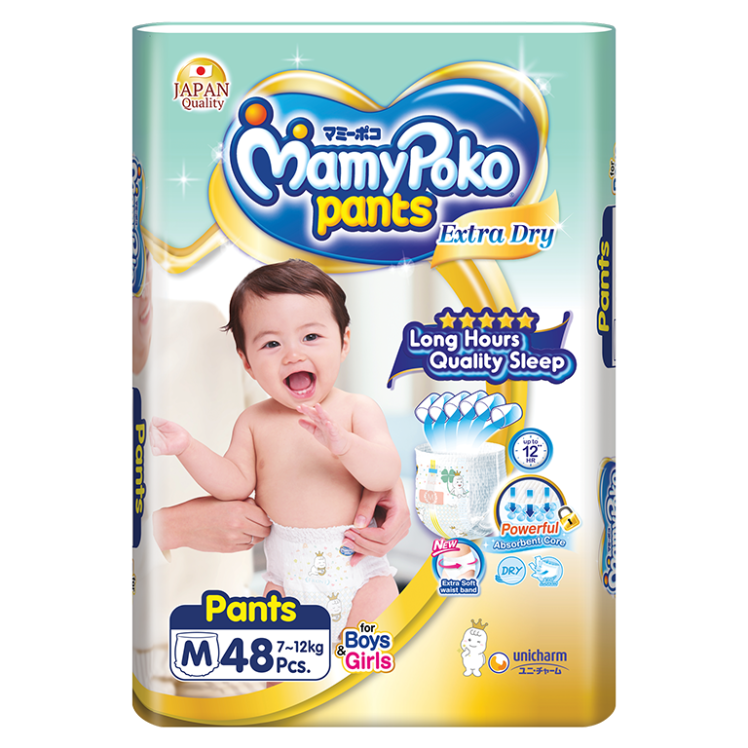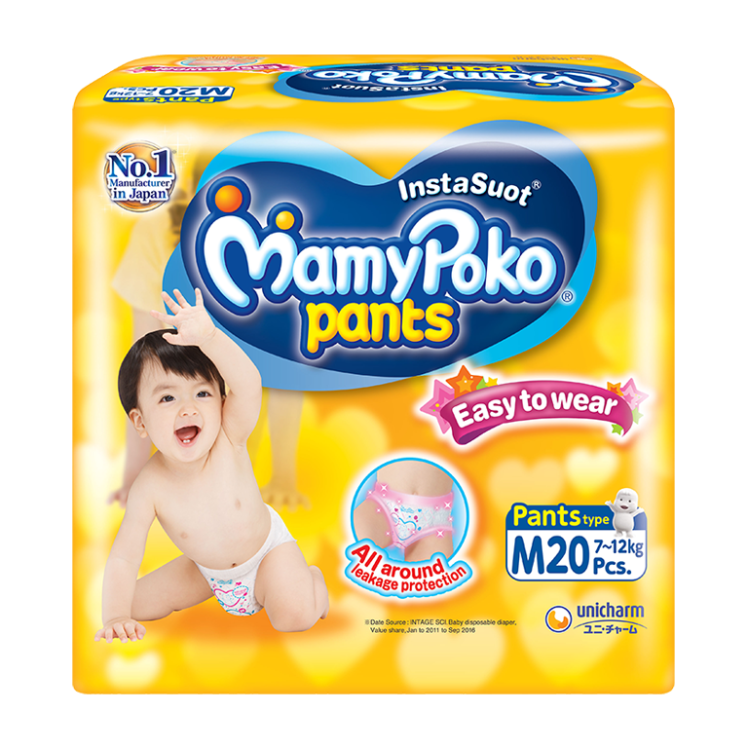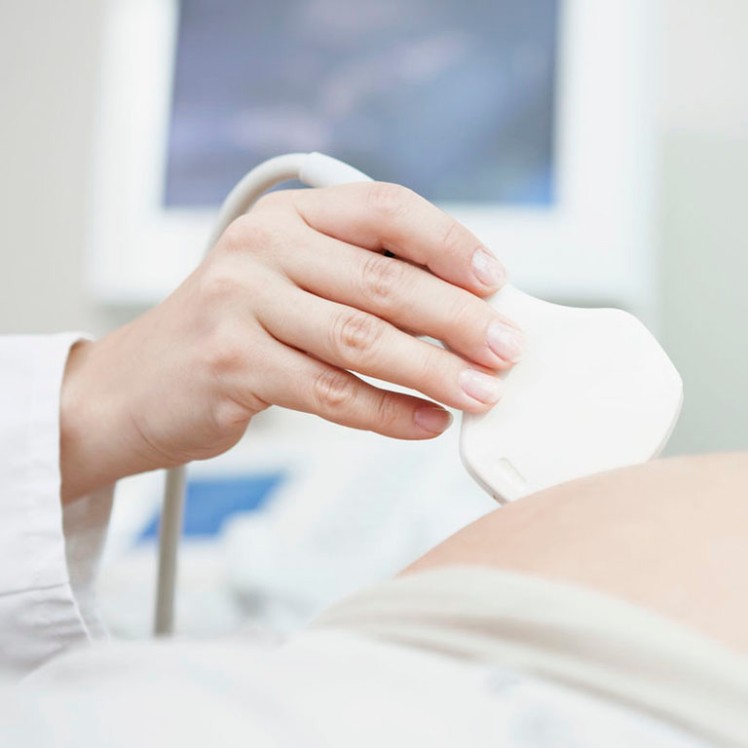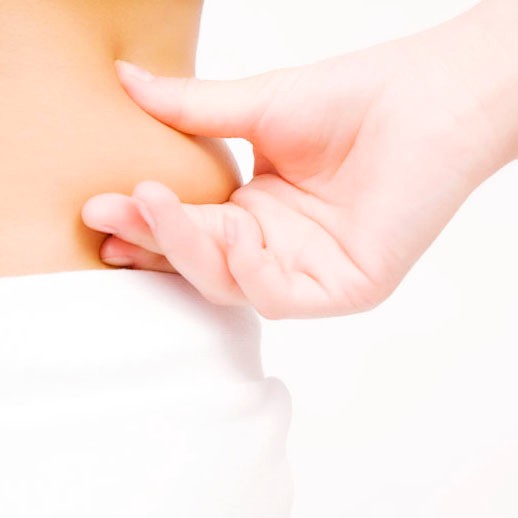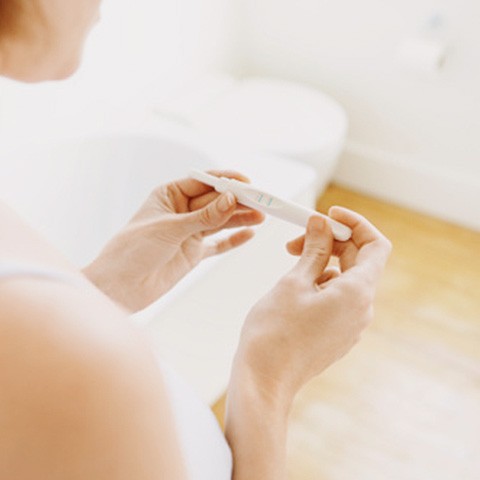Urinary Incontinence
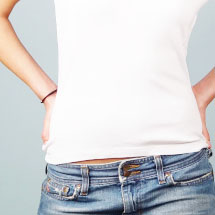
Worrisome Urine Leakage after Birth
During pregnancy or after birth, many mommies experience urine leakage.
Having the unthinkable happen the instant you sneeze is a common occurrence.
That may startle you, but it is really very routine, so don't worry.
Why are women prone to urine leakage after birth?
Even if they know that urine leakage is likely during pregnancy, many mamas may not know that it's likely after childbirth as well.
If you don't know, you may think it's only you and feel insecure.
But it's natural, so there's no need to worry.
Plus, if you know the reasons why, it should put your mind at ease.
Without further ado, let's take a look.
Urine leakage during pregnancy and after childbirth is natural
During pregnancy your enlarged uterus presses against your bladder, making urine leakage easy to occur. Even after birth, the bladder may continue to be pressed against by a still-large uterus, and the burden on it during delivery can make urine leakage easy to occur.
When you hear "urine leakage," you may think "Who, me?" but it's something that a lot of people experience during pregnancy and after birth, so it's nothing special at all. About 3-4 months after birth, once the bladder and the uterus return to their original positions, it will mostly stop, so rest assured.
What is the cause of urine leakage after birth?
A main reason for urinary leakage after birth is the burden placed on the pelvic floor during delivery. The pelvic floor, located on the bottom of the pelvis, is the part that supports the abdominal organs such as the uterus, the bladder, and the rectum, and it is composed of muscles and fibrous tissue. When the pelvic floor slackens, the urethra stops closing tightly, which leads to urine leakage.
Also, if nerve tissue is damaged due to delivery, impaired perception of the bladder and urethra may occur, and in addition to urine leakage, other troubles may occur. For example, you may not feel the urge to urinate, or the urine may not come out.
But in most cases as the pelvic floor recovers, it will gradually get better. During the time you're concerned about urine leakage, taking appropriate measures such as wearing a special pad, for example, will help you carry on comfortably as usual.
How can I reduce the burden on my pelvic floor?
In order to prevent urine leakage after birth, it's important to avoid putting a burden on your pelvic floor as much as possible. The burden is lighter with a short delivery, so you'll want to do your best to avoid things that may cause a difficult delivery, such as gaining too much weight during pregnancy or having pregnancy induced hypertension.
Also, pushing at the right time will reduce the burden on the pelvic floor. The midwife or doctor will tell you when to push during delivery, so time your pushing with their commands.
Self-care after giving birth
Even if you think it will get better naturally, you'll want to say goodbye to urine leakage as soon as you can.
To do that, recovery of the pelvic floor is important.
The recovery of the pelvic floor differs depending on how you spend your time after birth.
Let's take a look at specifically what you should do.
What should I do after birth?
A pelvic floor that is damaged by childbirth will mostly recover in 1-2 months after birth, if all goes well. Until then, try to lie down and rest as much as possible, and avoid carrying things like heavy baggage. You'll need at least 6-8 weeks before you recover fully enough to be able to carry heavy baggage safely. Overworking now will have repercussions later, so be careful.
Don't use a girdle right after birth
Not long ago, it was considered fine to wear a girdle and tighten up the belly right after birth. But actually, if you wear a girdle it pushes your uterus and bladder, etc. lower and puts a burden on the muscles and ligaments of the pelvic floor. If you delay recovery, it will inevitably prolong urine leakage. So don't wear a tight girdle for at least 4 weeks after birth, and instead devote yourself to resting your body. For the same reason, it's best to avoid abdominal exercises during this period.
Pelvic floor training
Toning the pelvic floor muscles can often ameliorate urine leakage. Aim to start around the time your perineal pain subsides. With pelvic floor training, it is important to continue it every day, without fail, two times daily for about 10 minutes each. The following people in particular probably had a large burden on their pelvic floors, so training is definitely recommended.
●Those who had frequent urine leakage during pregnancy or after birth
●Those for whom, during delivery, a long time passed between the cervix opening up and the baby being born (5 hours or more)
●Those who gave birth to a baby weighing 3,500g or more
●Those whose uterus is still low 1 week after delivery
Now, let's take a look at what sorts of things you should actually do.
Basic version
First, start by lying down on your back, a position where you won't be able to tighten your very too much.
1. Lying down on your back, spread your legs shoulder width apart, bend both knees slightly, and relax your body.
2. In that position, tighten the pelvic floor for 12-14 seconds out of 1 minute (if that's too hard, you can start with about 5 seconds).
You'll be tightening your anus, urethra, and vagina overall and slowly lifting the entire pubic area. Take care to keep your belly, legs, and lower back, etc. relaxed.
3. For the remaining 46-48 seconds of that 1 minute, relax your body completely.
4. Repeat this cycle 10 times, for 10 minutes.
Practice version
Now we'll introduce training methods that are easy to incorporate in your daily routine, so be sure and give them a try.
1. Sit all the way back in a chair, with your lower and upper back all the way against the backrest. Now relax your shoulders.
2. Just like in the basic movements, tighten the pelvic floor for 12-14 seconds out of 1 minute.
3. For the rest of that 1 minute, relax your entire body, also just like in the Basic version.
Repeat the tightening and relaxing 10 times.
*Doing it in a seated position makes it likely that you'll put pressure on the abdomen and lower back, so the key is to watch for this by placing one hand on your belly and taking care not to use your abdominal muscles.
Continuing this will elicit the maximum benefit from the training.
So give it your best, a little every day, and say goodbye to urine leakage!
update : 19.09.2017
Our favorites feature uses your browser's cookies. To use this feature, please enable cookies. If you are using Safari on your iPhone or iPad, please turn off the Private Browsing Mode. If you clear the cookie, you also clear the Favorite that you chose.







